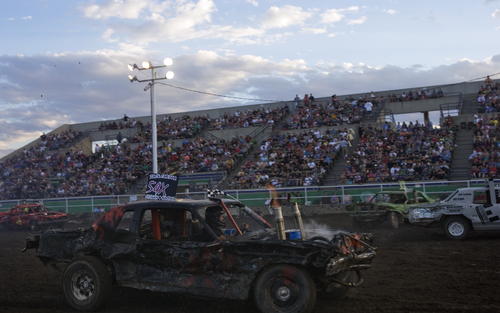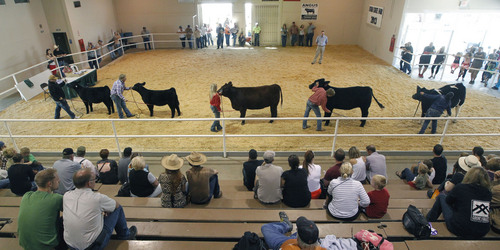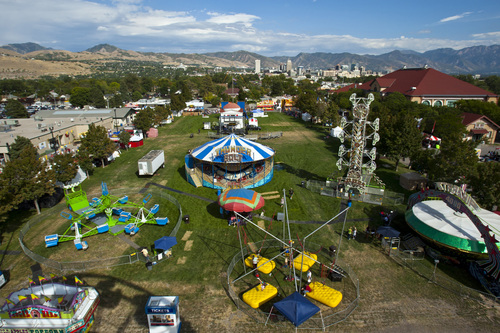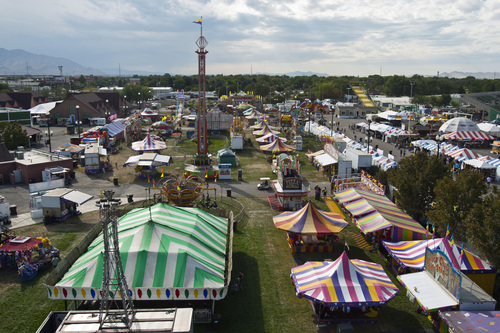This is an archived article that was published on sltrib.com in 2014, and information in the article may be outdated. It is provided only for personal research purposes and may not be reprinted.
The Utah State Fair is reaching a crossroads of sort, with legislators faced with the prospect of continued subsidies of the annual event, plus millions in renovations to aging buildings, or potentially overhauling how the event has been run for generations.
The fair found itself deep in a hole last year, after sinking money into improvements and then being socked by bad weather and low attendance.
A pair of audits of the management of the annual event also found lax purchasing oversight, leaving management unaware they were going over budget until it was too late.
Legislators stepped in and gave the fair an extra $600,000 — on top of the annual taxpayer subsidy of $675,000 — which will keep it afloat until 2017. But even then, the fair is not sustainable because attendance has dropped.
But the lease on the State Fairgrounds is up in three years, developers have their eye on the property west of downtown Salt Lake City, and the state has yet to sign a new lease for the event.
Joshua Haines, director of the Division of Facilities Construction and Management, said that, frankly, he needs to see a feasible business plan for the State Fair before he can sign a lease extension.
David Pulsipher, performance audit director with the Utah State Auditor's office, said, of the surrounding states that hold their fair in the state's biggest urban center, Utah has the lowest per-capita attendance and is the only one that relies on a taxpayer subsidy.
He recommended several alternative models for legislators to consider, including the state owning the grounds but contracting with a private company to run the fair; privatizing the entire operation, including the grounds; or co-locating with the Salt Lake County Fair.
Sen. Jim Dabakis, D-Salt Lake City, said maybe it's time to take the fair on the road, selling the sought-after land and holding the state fair in a different county each year.
Rep. Douglas Sagers, R-Tooele, said he took his family to the fair and the parking was horrendous and the fair itself "an unpleasant evening."
"When we got there, there really was nothing to see," he said. "The fair itself, the agriculture part was great, but beyond that there was nothing to see."
But Rep. John Mathis, R-Vernal, argued the fair should stay put, even if developers are "drooling" over the land, since it provides a connection between urban and rural Utah.
He said that sometimes the state spends money on things like the fair because it's "the right thing to do."
"We need to take a look at ourselves and say, 'Are we in Utah going to have a state fair and celebrate agriculture?'" Mathis said.
If the fair is going to stay put, it will take more taxpayer cash, according to a legislative audit, which found that two barns were allowed to fall into a state of such disrepair that they had to be condemned, without DFCM even recognizing the dilapidation.
Mathis said it was "mind-boggling" that the state's building division didn't know the barns were in such a condition. "I find it inconceivable that could happen," he said.
Haines disputed that DFCM wasn't aware of the buildings' condition, saying there are reports back to 2000 that noted the deteriorating structures, but the Legislature did not spend the money to renovate them.
Haines said the fairpark's management is not to blame for the poor conditions.
"From my standpoint, I'm new to the state," he said. "[The fairpark] is probably the one state facility that is well below what I have seen [elsewhere] and really that's our fault. It's not the fairpark's fault."
The Legislature directed DFCM to develop a master plan for the park by the end of next month, and report back to lawmakers.
Twitter: @RobertGehrke









